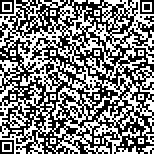下载中心
优秀审稿专家
优秀论文
相关链接
摘要

基于简化的城市目标三维结构模型, 利用计算机图形学中辐射度方法, 对城市目标的热辐射方向性规律进行模拟。在传感器分别位于近地面和卫星轨道时, 研究了城市目标各组分在视场内的权重随观测天顶角、方位角和观测距离改变的变化规律。结果表明: 城市目标方向亮温地面辐射测量存在显著视场效应。当传感器位于近地面时, 在垂直太阳主平面附近, 视场效应达到最大。方向亮温随观测距离的改变有明显变化。随着观测距离的增加, 视场效应急剧减小。将近地面测量得到的方向亮温与卫星影像计算所得的方向亮温对比时, 视场效应是一个必须考虑的
Thermal anisotropy regime for urban targets was investigated using a simplified urban structure model based on the radiosity principles and OpenGL. Each component fraction’s variation regime was examined by computer simulation in different observation zeniths, azimuths and distances between the sensor and targets. Results indicate that: (1) significant field of view (FOV) effect exists in the DBT (directional brightness temperature) ground-based platform observations. It is able to reach the maximum values near the plane perpendicular to the solar main plane. (2) Analysis about FOV effect for a physical model of typical urban surface and cover patterns at different spatial locations and time series reveals that it can achieve several centigrade or so in a sunny day. (3) There is a significant “scale effect” in near-ground observations and it varies along with the distance between the sensor and urban targets. (4) The FOV effect cannot be neglected in comparisons between DBTs observed in ground-based field experiments and in images acquired from satellites.

